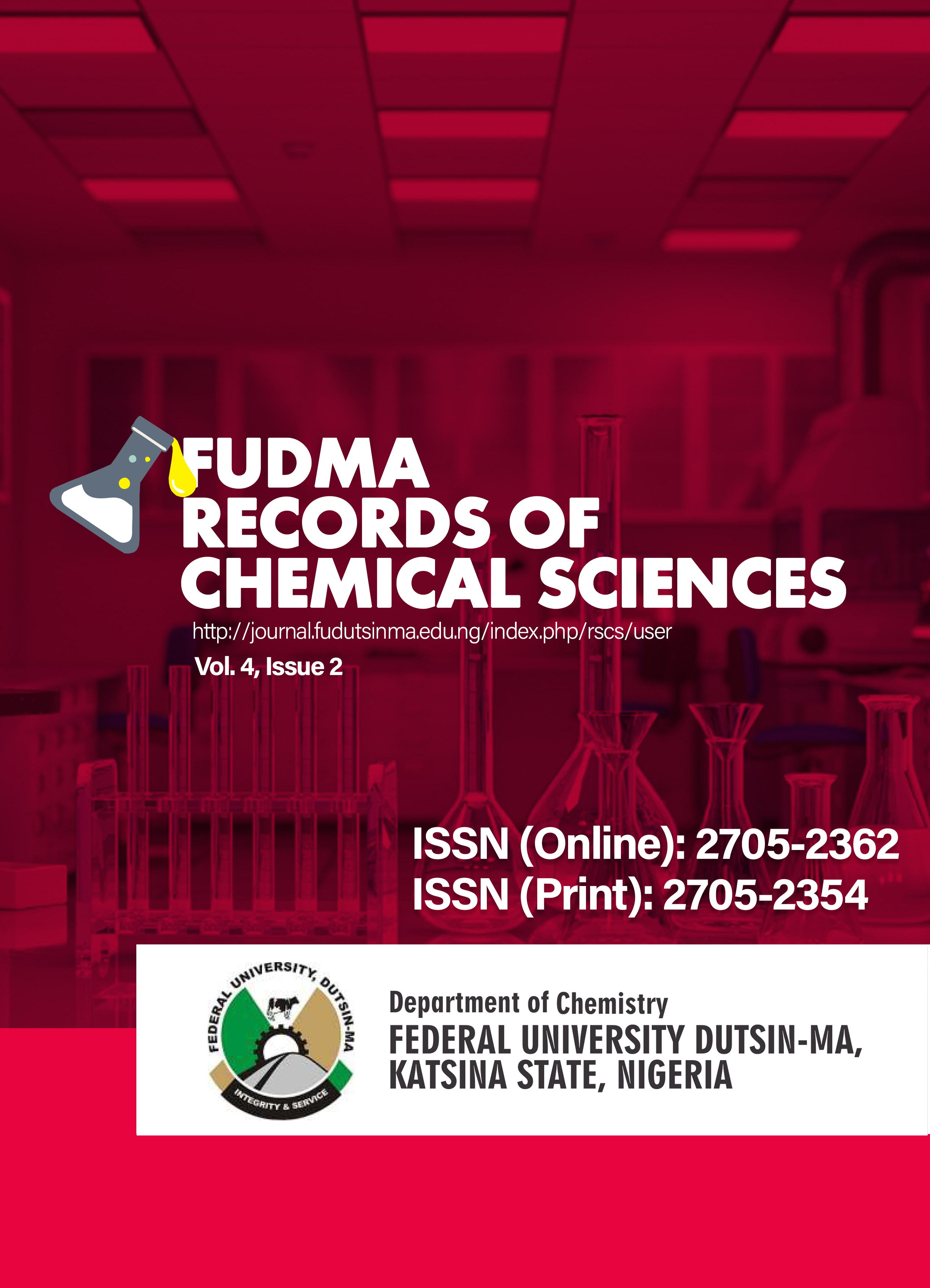Chemical Composition and Antidiabetic Activity of the Leaves of Terminalia catappa Linn. Grown in Dutsin-Ma
DOI:
https://doi.org/10.33003/frscs-2025-0402/09Keywords:
Chemical Composition, Antidiabetic, T. catappa, Leaf extracts, Medicinal plantAbstract
The main objective of this study is the investigation of the antidiabetic properties of the leaf of Terminalia catappa, a medicinal plant useful for the treatment of various diseases, including diabetes, in northern Nigeria. The plant’s leaf, after preparation, was subjected to cold extraction using dichloromethane (DCM) and methanol. In vitro antidiabetic ability of Terminalia catappa leaf extracts (DCM and methanol) was evaluated by the glucose uptake method using the yeast cell model. Phytochemical screening of both the extracts and Gas chromatography mass spectrometry (GC-MS) of the most active extract (DCM) was carried. In vitro antidiabetic activity by glucose uptake of yeast cell assay showed a dose-dependent rise in % of glucose uptake of DCM and methanol extracts of Terminalia catappa leaf. Overall, DCM extract revealed the highest (94.00%) glucose uptake at a 50 μg/mL concentration. Eight phytochemicals were present in the plant’s extracts: alkaloids, coumarins, flavonoids, steroids, phenols, tannins, saponins, triterpenoids and glycosides. The result of the GC-MS analysis of the dichloromethane extract depicted the presence of 47 compounds. Out of these compounds, a compound, identified as Linoleic acid with (Mol. wt = 278), exhibited the maximum peak area (22.12%), followed by 1,2-Benzenedicarboxylic acid (Mol. wt = 390) and Bis(2-ethylhexyl) phthalate (Mol. wt = 390) having peak areas of 6.85 and 5.55%, respectively. The study revealed the potential antidiabetic activity of leaf extracts of Terminalia catappa and this activity may be linked to the presence of the most abundant phytocompounds detected in the plant’s leaves






